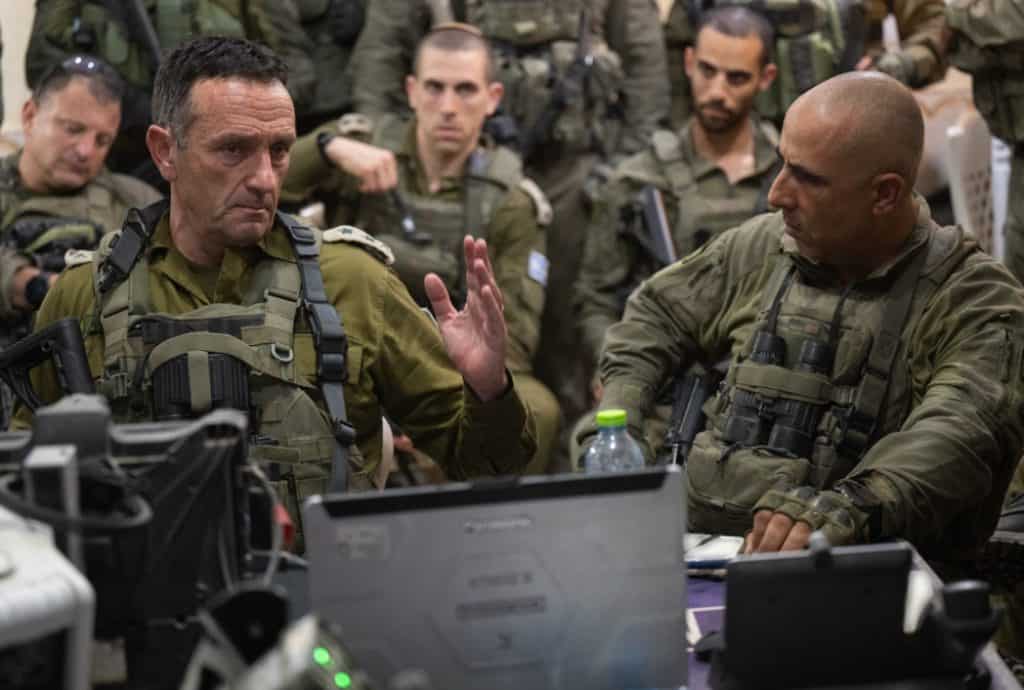
On June 24, Israeli Defense Minister Yoav Gallant met with Amos Hochstein, a senior advisor to President Joe Biden, in Washington, DC, discussing what Gallant has called a transition to “phase C” of Israeli operations in Gaza. According to a statement from Gallant’s office, Gallant indicated that this transition would impact developments on other fronts, as well. This statement likely means Israel continues to prepare militarily and diplomatically for escalation in the north after Hezbollah’s continued attacks.
Gallant’s trip to Washington came as IDF Chief of Staff Herzi Halevi traveled to southern Gaza to meet with the head of the IDF’s 162nd Division, Brigadier General Itzik Cohen, on the evening of June 23. “We are clearly approaching the point where we can say we have dismantled the Rafah Brigade; that it is defeated not in the sense that there are no more terrorists, but in the sense that it can no longer function as a fighting unit,” Halevi said.
In a meeting with officers from the division, Halevi praised their success over the last month and a half of fighting in Rafah. He also said Hamas “has suffered many casualties, and you will ensure until the completion of the mission here to eliminate as many terrorists and destroy as much terrorist infrastructure as possible going forward.”
The messages about Israel transitioning to a new phase in Gaza and the defeat of Hamas in Rafah indicate that the IDF believes it has achieved enough progress in preparation for the Defense Ministry’s latest plans. Gallant has not elaborated fully on what will take place during “phase C” in Gaza, although he has floated plans for what happens after Hamas is defeated in the past. Possible scenarios could involve small IDF raids to target specific terror cells and an attempt to replace Hamas as a governing body in Gaza.
The new phase could also mean more neighborhood sweeps to remove terrorist cells that attempt to reconstitute themselves. Hamas continues to control central and parts of northern Gaza. The group also fired rockets at several Israeli communities on June 24, showing it is still capable of threatening areas along the border.
Israeli Prime Minister Benjamin Netanyahu has also articulated an operational change in Gaza. On June 23, Netanyahu said that the intensity of the conflict would soon shift to something lower than in the past. The war’s intensity has shifted before, from hundreds of daily airstrikes and multi-division ground maneuvers in October and November of last year to the pace of operations today. Currently, one IDF division is in southern Gaza on the Egyptian border, and a second division controls the central Netzarim Corridor south of Gaza City.
Gallant is meeting with Secretary of Defense Lloyd Austin, CIA Director William Burns, and Secretary of State Antony Blinken while in Washington. He also met with White House Coordinator for the Middle East and North Africa Brett McGurk. “Our ties with the United States are more important than ever. Our meetings with US officials are critical to this war,” Gallant said before departing for the US.
Gallant is also focused on discussing tensions with Hezbollah on Israel’s northern border. “We are prepared for any action that may be required in Gaza, Lebanon, and in additional areas,” he said.
On June 24, the IDF carried out an airstrike in Gaza targeting Muhammad Salah, who the IDF said was “responsible for projects and development in Hamas’ Weapons Manufacturing Headquarters.”
“Salah was part of a project to develop strategic weaponry for the Hamas terrorist organization, and he commanded a number of Hamas terrorist squads that worked on developing weapons,” the IDF stated. Other IDF units carried out raids near Rafah to locate and destroy terrorist infrastructure, such as rocket launchers and weapons.
In his discussions on June 23, Chief of Staff Halevi said that the IDF has made significant progress in southern Gaza by “cutting off Hamas’ supply for future smuggling.” He also said soldiers were mapping known tunnels for destruction and dealing with other “underground assets,” referencing new tunnels the IDF continues to find.







